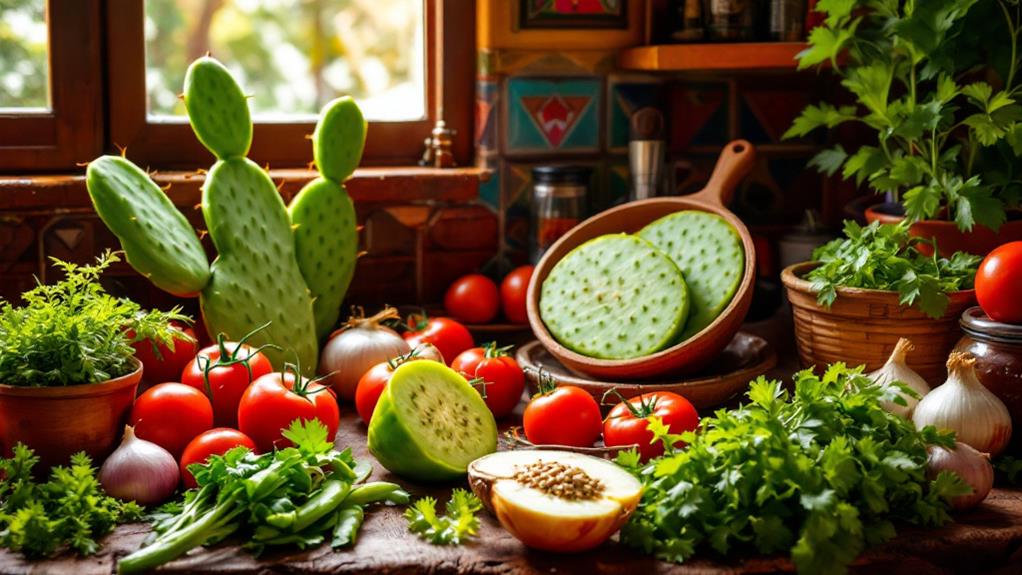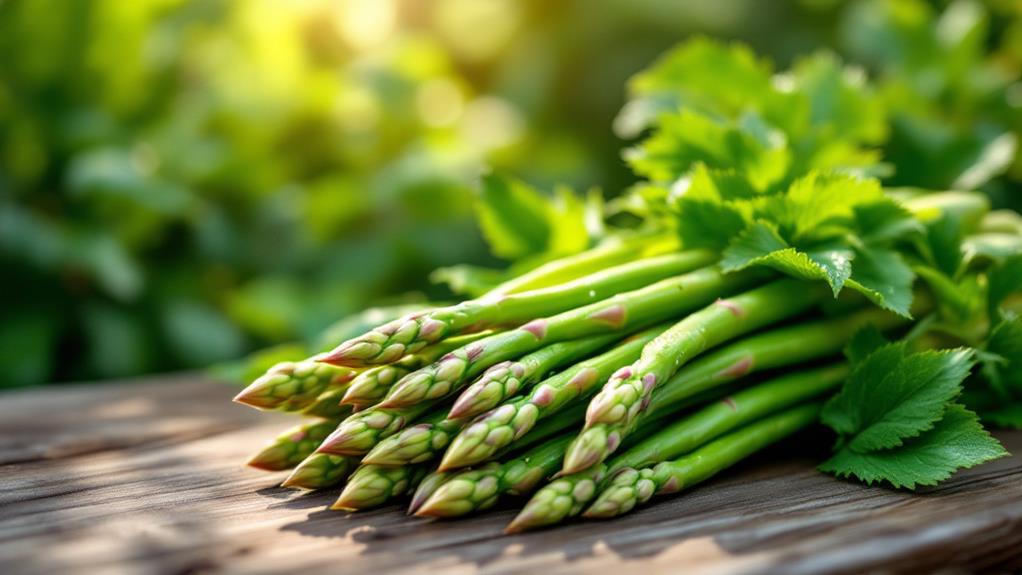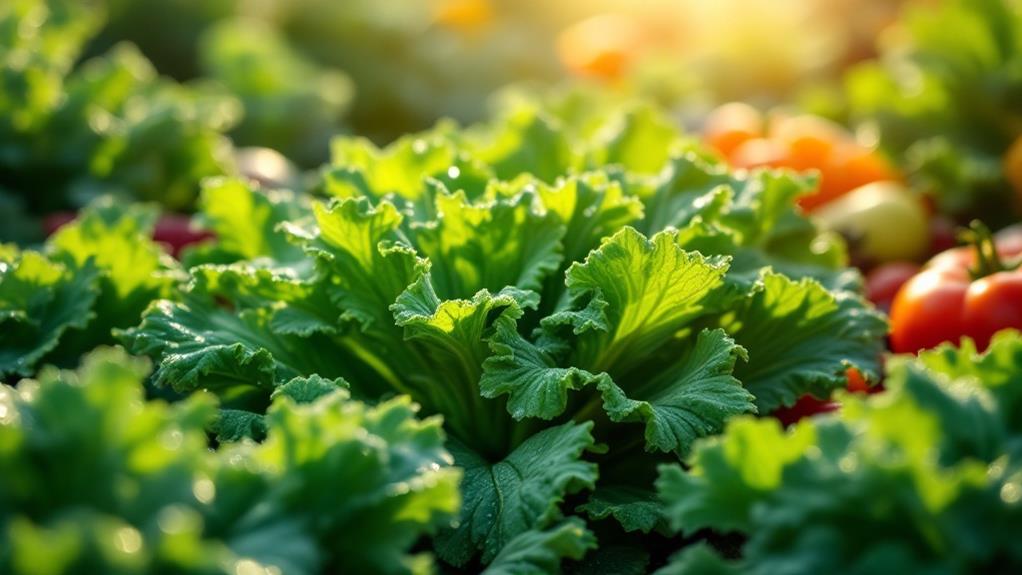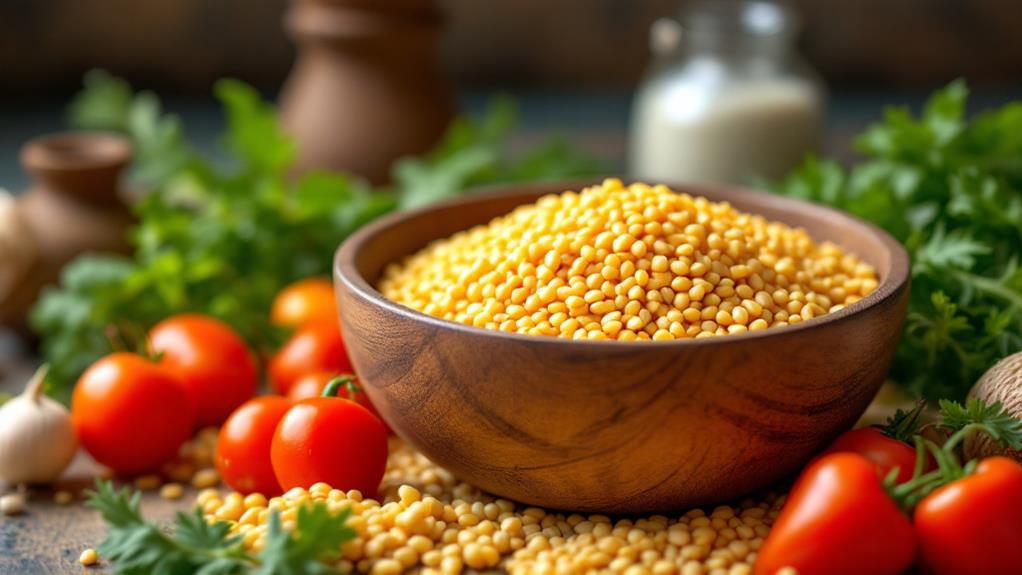A Guide to the Types and Benefits of Kumquat: A Nutrient-Dense Citrus

Kumquats are small citrus fruits packed with nutrients and flavor. You can investigate different varieties like the tart Nagami, sweet Marumi, or the even sweeter Meiwa. They're low in calories and high in vitamin C, making them perfect for enhancing immunity. With nearly 6.5 grams of fiber per 100 grams, they aid digestion too. Their peels contain antioxidants that combat oxidative stress. Enjoy them whole as a snack, or use them to improve salads and desserts. For the home gardener, kumquat trees are easy to maintain. Plunge further to reveal the remarkable health benefits and culinary uses of this citrus gem.
Understanding Kumquat Varieties
When exploring kumquats, you'll encounter three main varieties: Nagami, Marumi, and Meiwa. Each offers unique flavors and culinary uses that cater to different tastes. Nagami kumquats are the most commonly cultivated and known for their sour, tart flavor. Their oval shape and edible peel make them perfect for preserves and garnishes, adding a citrusy zing to your dishes. They're ideal if you enjoy a tangy bite, and their high vitamin C content contributes to your health by boosting your immune system.
Marumi kumquats, on the other hand, are round and sweeter. Their pleasant sweetness makes them a great choice for fresh consumption and salads, where their balanced citrus flavor shines. The edible peel is thin, and the juicy flesh provides a delightful burst of sweetness, making it easier to enjoy their nutritional benefits directly.
Meiwa kumquats are the sweetest among the three varieties, offering a flavor that's less tangy, which makes them perfect for eating raw. They're popular for home planting due to their palatable taste. Regardless of whether used in desserts or enjoyed as a fresh snack, Meiwa kumquats are a delicious way to elevate your diet with their healthful nutrients.
Nutritional Profile
Beyond their delightful flavors, kumquats pack a powerful nutritional punch that improves your well-being. These tiny citrus fruits are a low-calorie option, with only about 71 calories per 100 grams, making them a smart choice for your diet. Despite their small size, kumquats are bursting with vitamin C, providing around 8 mg per fruit. This crucial nutrient supports your immune system and contributes to general health.
Kumquats are also rich in dietary fiber, offering about 6.5 grams per 100 grams. This fiber aids your digestive health by promoting regular bowel movements and may even help lower cholesterol levels. What sets kumquats apart is their edible peel, which is loaded with antioxidants, mainly flavonoids and carotenoids. These compounds help combat oxidative stress, bolstering your body's defenses.
Incorporating kumquats into your diet provides other nutritional benefits as well, including small amounts of vitamin A, calcium, and potassium, which support multiple bodily functions. Here's a snapshot of what kumquats offer:
- Low-calorie: Only 71 calories per 100 grams
- Immune support: Around 8 mg of vitamin C per fruit
- Digestive health: 6.5 grams of dietary fiber per 100 grams
- Antioxidant-rich peel: Flavonoids and carotenoids
Health Advantages
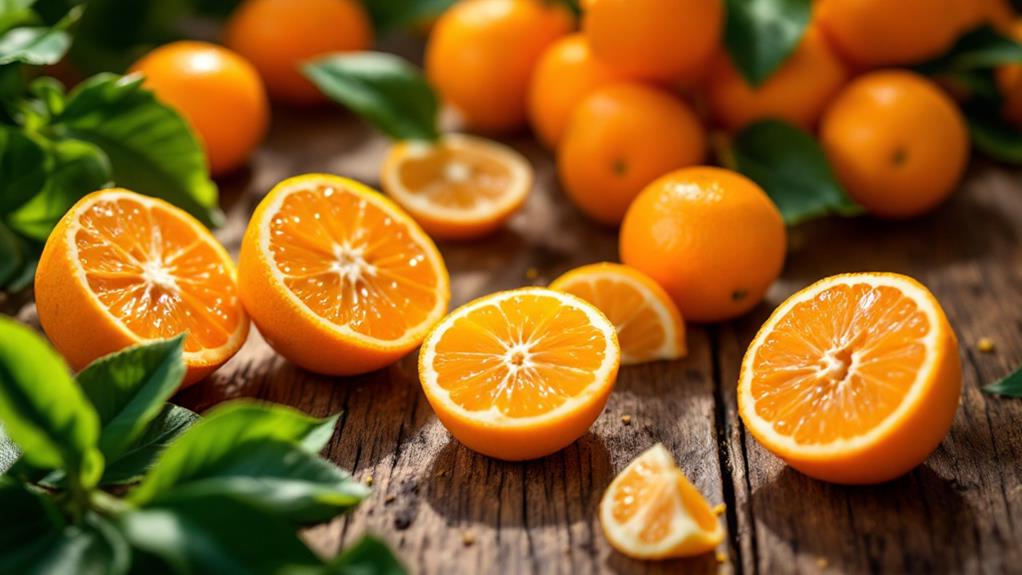
Kumquats offer several impressive health advantages that make them a valuable improvement to your diet. This small fruit is packed with vitamin C, providing about 8 mg per fruit, which supports your immune function and assists in collagen production, vital for skin health. By including kumquats in your meals, you can strengthen your body's natural defenses against illness.
The health benefits of kumquats extend to your digestive health, thanks to their high soluble fiber content. With roughly 6.5 grams of fiber per 100 grams, kumquats help regulate digestion, lower cholesterol, and maintain stable blood sugar levels. Eating them regularly could lead to improved gut health and reduced cholesterol levels.
Moreover, kumquats are rich in antioxidants, which play an essential role in reducing oxidative stress and potentially lowering cancer risk. These antioxidants work by repairing DNA damage and protecting your cells. The presence of beta-cryptoxanthin in kumquats is linked to a decreased risk of lung cancer, emphasizing their role in cancer prevention.
Additionally, consuming kumquats regularly may improve stress resilience and elevate natural killer (NK) cell activity, further supporting your immune defense. Welcome this nutrient-dense fruit to enjoy these substantial health benefits.
Potential Risks
While kumquats offer numerous health benefits, it's vital to be aware of their potential risks. Raw kumquats may carry germs like salmonella, E. coli, and listeria, which can lead to foodborne illnesses if not handled properly. As nearly 50% of foodborne illnesses in the U.S. are linked to fresh produce, ensuring food safety when consuming kumquats is key. To minimize the risk of contamination, always wash kumquats thoroughly before eating them raw. This simple step can greatly reduce the likelihood of ingesting harmful bacteria.
If you cut or peel kumquats, make sure to refrigerate them within two hours. Leaving them out longer can increase the risk of spoilage, potentially leading to health risks. For those with citrus allergies, it's vital to exercise caution, as consuming kumquats could trigger rare allergic reactions.
Here's a quick summary to keep in mind:
- Proper washing: Wash kumquats thoroughly to minimize contamination risks.
- Refrigerate promptly: Store cut or peeled kumquats within two hours to avoid spoilage.
- Citrus allergies: Be cautious if you're prone to allergic reactions.
- Foodborne illnesses: Handle kumquats properly to prevent health risks.
Culinary Uses

In the world of culinary delights, kumquats stand out for their unique combination of sweet peel and tart flesh, offering a lively twist to an assortment of dishes. You'll find these little citrus gems are incredibly versatile in culinary applications. Regardless of if you're tossing them into salads for a burst of flavor or incorporating them into desserts, kumquats provide an unexpected zing that improves your culinary creations.
Their bright flavor and attractive appearance make kumquats perfect as garnishes for cocktails, adding both visual appeal and a invigorating taste. For those with a sweet tooth, transforming kumquats into jams, jellies, or marmalades is a delightful option. Their natural sweetness and tartness combine beautifully to create spreads that are as flavorful as they are unique.
When you're looking for a unique snack, kumquats shine as a healthy choice. You can eat them whole, enjoying the contrast of the sweet peel and tart flesh. Don't forget their high water content and fiber, which contribute to hydration and digestion. Slicing kumquats horizontally to scoop out the flesh can improve their presentation in different dishes. With kumquats, the culinary possibilities are truly endless.
Selecting and Storing
When choosing kumquats, look for those that are bright orange to yellow-orange, firm, and unblemished to guarantee you get the best flavor and freshness. Proper selecting is key to enjoying these nutrient-dense citrus fruits at their finest. Once you've selected the freshest kumquats, it's crucial to focus on storage to maintain their quality.
You can store kumquats at room temperature for a short period, typically 2-3 days, to keep them fresh. However, if you want to extend their shelf life, opt for refrigeration. Use a breathable container to allow air circulation, preventing moisture buildup that could lead to spoilage. Avoid storing kumquats in plastic bags, as they trap moisture and can cause the fruit to spoil faster.
To make certain your kumquats remain fresh, regularly inspect them for any signs of spoilage, like soft spots or mold. For longer preservation, consider freezing kumquats for up to six months, which is perfect if you're planning to use them in future smoothies or baking projects. Proper care in selecting and storing kumquats guarantees you'll enjoy their unique flavor and nutritional benefits.
- Select bright orange, firm kumquats
- Store at room temperature for 2-3 days
- Refrigerate in a breathable container
- Inspect regularly for spoilage
Growing Your Own Kumquat
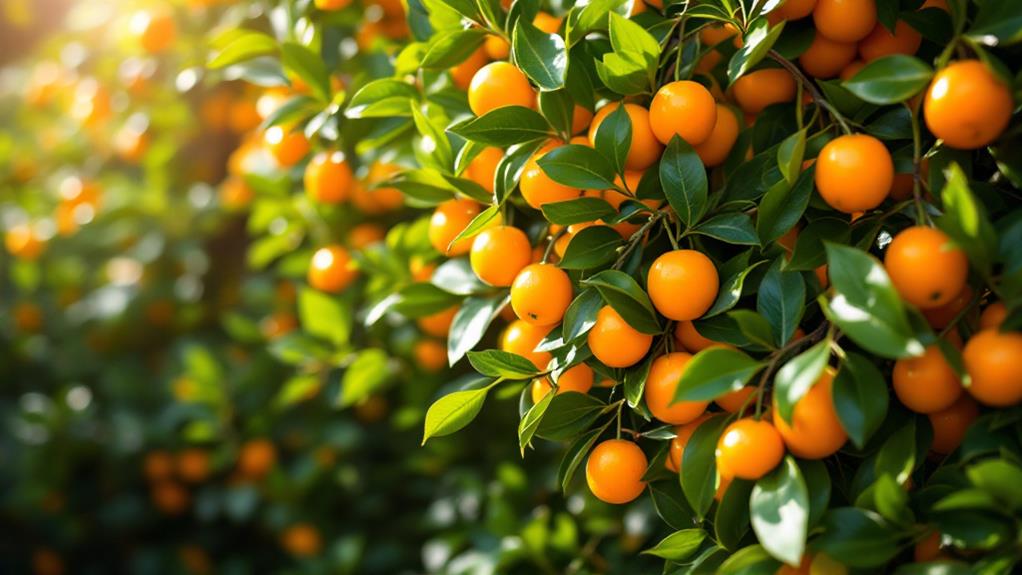
After mastering the selection and storage of kumquats, you might be interested in growing your own. Kumquat trees are a delightful enhancement to your garden, especially if you live in USDA zones 8-11. These citrus beauties thrive in full sun and require well-draining soil for peak growth and fruit production. When planting, dig a hole twice the size of the root ball and space each tree 5-6 feet apart. This spacing guarantees good air circulation and sunlight exposure.
Regular watering is vital. While kumquat trees are moderately drought-tolerant, they still need consistent moisture, particularly during dry periods. Allow the soil to dry slightly between waterings to keep the roots healthy. During the growing season, apply a balanced, slow-release citrus fertilizer to promote healthy growth, but avoid fertilizing in winter.
Pruning is another fundamental step in maintaining your kumquat trees. After the fruiting season or in early spring, prune the trees to shape them and remove any dead branches. This encourages new growth and keeps your trees in prime condition with minimal care. With these tips, you'll enjoy a bountiful harvest of kumquats right from your backyard.

